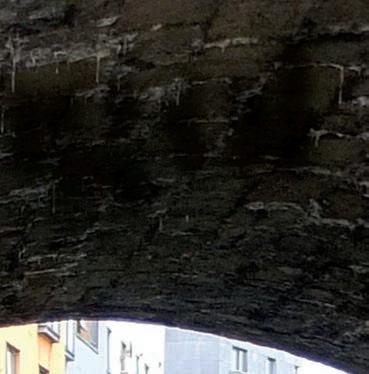
9 minute read
Gerry Cody
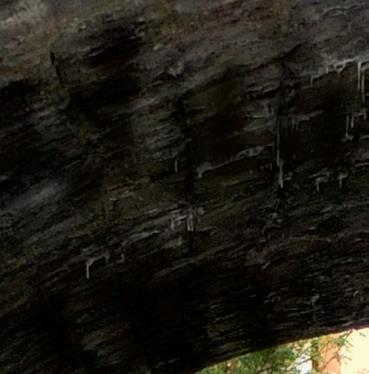
The gas lighting of Kilkenny city
Advertisement
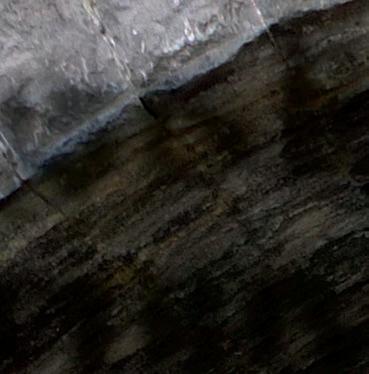

A Lamplighter went methodically about his work
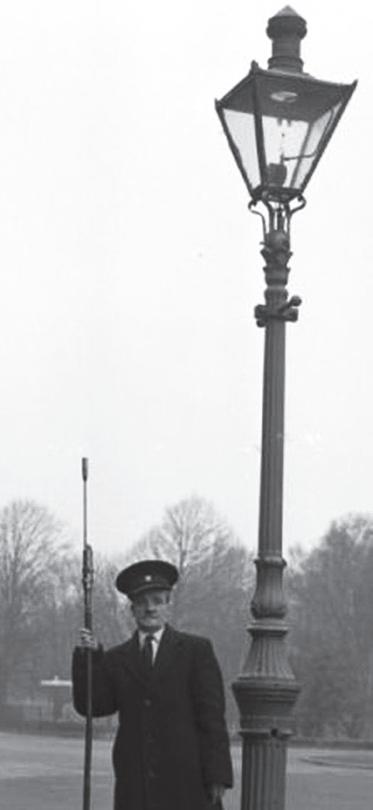

By Cois Céim in association with e Saturday Walkers Group
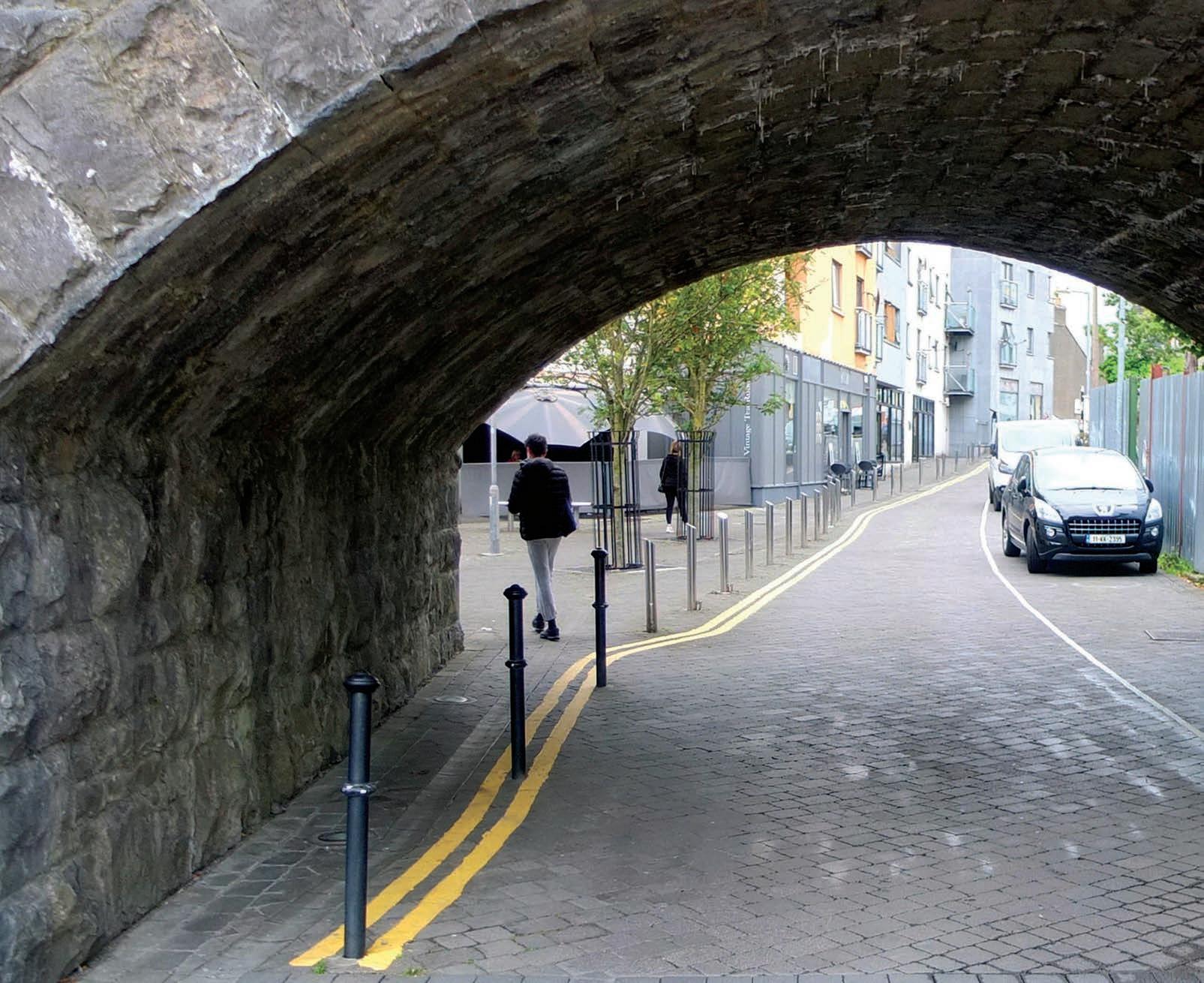
THE lighting of our city streets, which we take for granted, is a fairly recent phenomenon.
For centuries after the founding of Kilkenny city, the only light available to people who braved the streets and laneways after nightfall would have been the light they provided for themselves such as a lantern, oil lamp or rush light.
A bye law in 1672 stated a candle or lantern be placed in a window of every house during the Winter months. A century later the Corporation had made some provision for street lighting as we nd them advertising in 1768 for two or three lamplighters. e light at this time was provided by the burning of oil on a cotton wick with protection from wind and rain by a glass bowl.
It was recorded in 1818 that from 25th March to the following October to discontinue the lamps. It was noted that for the previous two years the full cost of the city lamps had been met by the Corporation. Previously the costs were defrayed jointly by the Corporation and the citizens.
INTRODUCTION OF GAS LIGHTING IN THE 1790’s
e use of gas for lighting dates from the 1790s. Initially it was used for factory lighting. In the early 1800s gas for lighting was supplied on a municipal basis in the major cities of Scotland and England. Similar progress was made in Ireland when Cork was supplied with gas in 1816.
In 1829 the Mayor of Kilkenny was asked to convene a public meeting to discuss the plan for lighting the city by gas. A report was signed by thirty four of the leading citizens, who were principally from the commercial and business communities. e meeting was convened on the 28th May, and which Mr Peckston , who had installed gasworks in Dublin, Drogheda and Waterford outlined the plan. £6,000 was required as share capital by which a gas light company would be formed and managed by a committee of ve proprietors. A committee was appointed to look into the matter and report to the meeting on June 1st. Mr. Peckston’s original plan was to extend street lighting to 3586 yards. e committee recommended the street lighting amount to 1055yards.
Omitted from the scheme: Green St., Dean St., Coach Rd., Bull Alley., Vicar’s St., Lee’s Lane, Michael’s Lane, Magdalen St., Pennyfeather Lane, and Upper John St. to the Barrack Gate. e streets left in the scheme were Patrick St., e Parade, King St., John St. (to the pump) High St., Walkin St., (to the chapel) William St., Chapel Lane., Wellington Square, James St., Coal Market., Irishtown (to Dean St.) and probably Rose Inn St. In a move to decrease expenditure further, they proposed to extend the burners or lamps at a distance of 80 yards rather than the 60 yards which Peckston proposed. ey believed the principal streets would be well lighted by sixty ve burners. e running costs would be paid for by the Corporation or the citizens.
LIGHTING THE MORE PROSPEROUS AREAS OF THE CITY
It is fairly clear that the lighting was being introduced into the more prosperous parts of the city. e more obvious reasons why this was so, was that probably the majority of the promoters of the gas house scheme lived on the selected streets, also these streets contained the better class of housing. Another reason was the leading trade and commercial premises were on these streets and there would be greater opportunities for supplying private lights.
When the nal plan was brought before the public in late July, the yardage of the streets was 3288 to be lighted by sixty ve burners at 50 yards spacing. e costs which would fall on the public purse were a very important part of the equation. ere seemed to have been recognition that the Corporation would not meet the whole of the running costs (£195) and it was suggested the inhabitants should make use of the Lighting of the Towns Act. Under this Act the householders of towns and cities where there was no provision for lighting or cleansing, might vote for their introduction with the costs been met by a rate on property. A meeting was convened on July 27th to take a vote on whether to

Nothing remains of the gas works, except the laneway leading to the site is a reminder. It is named Gas House Lane. Photo: jbs photos Kilkenny Coach Road was omitted from the scheme Photo: jbs photos Kilkenny

implement the Act. ere was extensive opposition to the Act, a placard was posted up throughout the city addressed “To the people. Warning- that they would have to submit to a system of taxation if the proposal was carried into law”. Of the £195 projected annual cost, £100 would be met by the corporation, £20 by Irishtown, £65 be raised as a tax on the city and £10 by Irishtown. With no seconder for the proposition the Marquis of Ormonde in the interest of initiating a discussion moved accordingly. e proposition was defeated and the introduction of town gas was abandoned for a further eight years. In January 1838 proposals were again made for the establishment of a gas lighting company. ere appears to have been no question that it would not proceed. e rst advertisement announcing that share lists were open. Mr Liddell the proposed contractor had prepared a report, showing that the Kilkenny Gas Light Company was capable of a pro t even in the rst year. All but twelve of the 400 £10 shares had been taken up by February. Of the sixty shareholders all but one were local people with only a handful outside the City itself.
On July 20th 1838 the trustees were granted a ninety nine year lease from the Corporation of a plot of land at St. John’s Green. On August 3rd Andrew Liddell announced that he commenced the contract and announced supplying gas within three months. Mr Wright’s at John’s Bridge had newly opened and had for sale Gas Lustres, Pendants, Brackets, Tubes etc. A meeting of the gas consumers was held in December 1842, and indicates that gas was available in Coal market, High St. John St. King St. e Parade, Patrick St. Rose Inn St. and Walkin St. It is likely that the system extended by March 1844 for some of those who requested the meeting were from Dean St., Magdalen St., Upper John St., and William St. By 1849 there were 177 lamps compared to the sixty ve proposed in 1829.
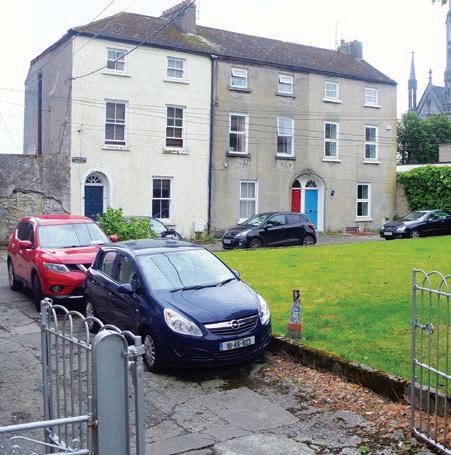
THE NIGHT OF THE BIG WIND DAMAGED CHIMNEY
e Kilkenny Journal reported on November 24th 1838 that the City was lit with gas on the previous Wednesday for the rst time. Unfortunately in early January 1839(the night of the big wind) the chimney at the gas works over 100 feet high and built only a short few weeks was brought down in the hurricane and falling on the gas house damaged the works. Eight months later the company was able to light the city, the new chimney having been completed. e company was constantly the butt of complaints from the citizens and consumers. Sometimes about the public lamps, ‘a penny candle would show as much or more light’. But principally about the price of gas. In 1849 a requisition was signed by 109 individuals, that gave an idea of the amount of private customers the company supplied. e complaints and threats of both individuals and the corporation, which included a boycott of gas and the reversion to oil lighting achieved marked reductions in the early years from 15shillings per 1000 cubic feet in 1839 to 11s and 6 pence in 1844 to 9 shillings and 2 pence in 1855 and by 1898 to 5shillings and 9 pence. e nances of the company were in great shape despite the reductions. e dividend on shares had risen to 10% by 1844 and had settled at 7% by 1851. Forty one shares were o ered for sale by Mr. Fitzsimmons of the Medical hall, one of the original committee of management. e position of Fitzsimmons as a major shareholder may have had some bearing on an unexplained incident in 1841. It was reported that bullets were cast at Kilkenny gasworks in the presence of a superintendent, a disclaimer was published that “Mr Phillips, an apprentice to Mr Fitzsimmons, had nothing to do with the casting of bullets which had taken place at the gas works”. ere was more side products to Gas production than, coke, tar, benzol, and ammonia.
HUGEE INCREASE OF THE USE OF GAS
By 1899 Kilkenny Gas Works was serving over 300 customers, output being 12 million cubic feet per annum. In the ensuing 60 years, output had increased to 34 million cu.ft. supplying 1500 customers. e high cost of coal and labour made coal gas manufacture uneconomic and in the 1970s Kilkenny ceased production. e major cities switched to natural gas piped from Kinsale. Kilkenny itself bene ted from a feeder o the Cork Dublin pipeline. e plant was demolished and the site sold to developers in the 1990s, as a commercial entity. Nothing remains of the gas works, except the laneway leading to the site is a reminder. It is named Gas House Lane.
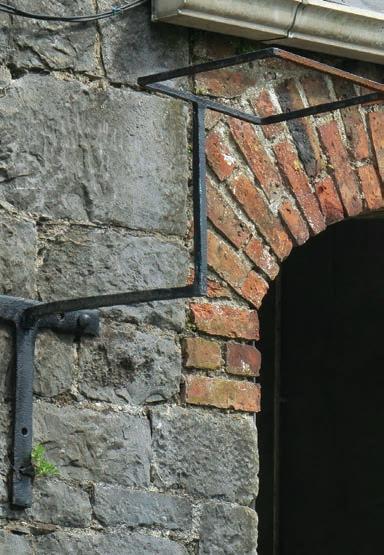
The original gas lamp frame at St John’s church on the Dublin Road (Photo by Pat Shortall)
Wellington Square which availed of the Gas light scheme. Photo: jbs photos Kilkenny

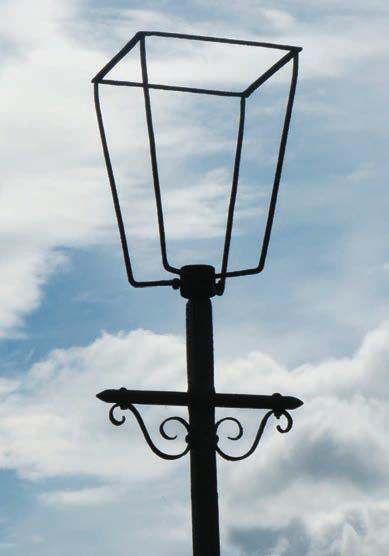
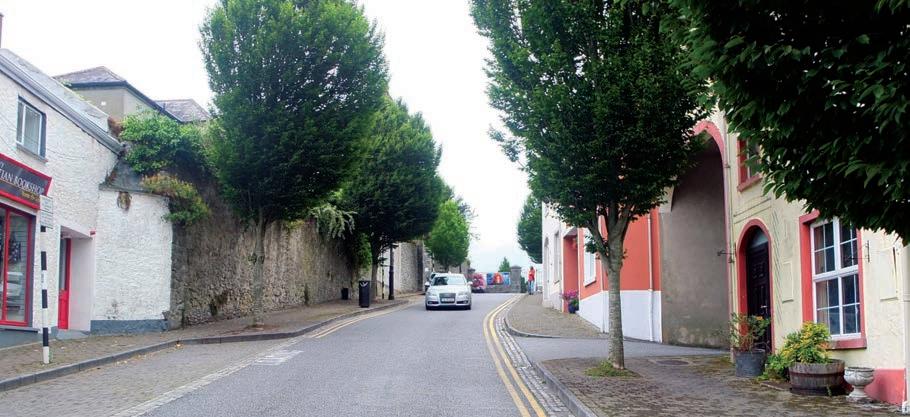
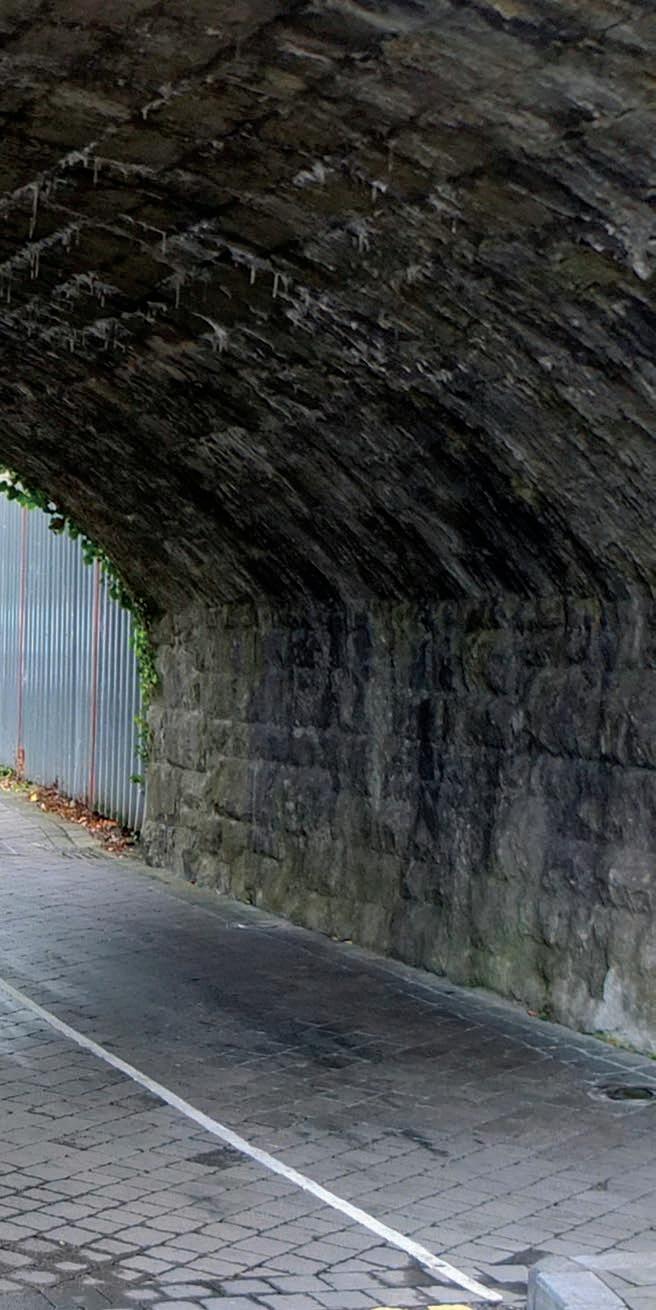
Sources: Old Kilkenny Review 1997, Edward J.Law.
A picture of the gas light stand at the handball alley on Michael Street. (Photo: Pat Shortall)
This photo shows one of only three remaining gaslight stands which is on the laneway between Dean Street and The Black Abbey. (Photo Pat Shortall)








